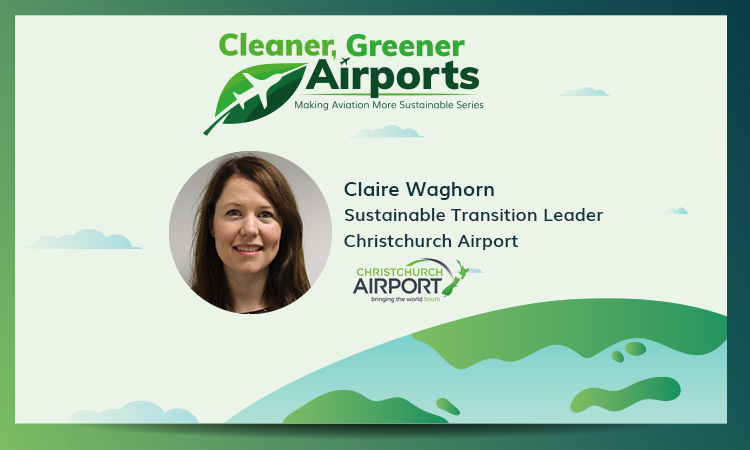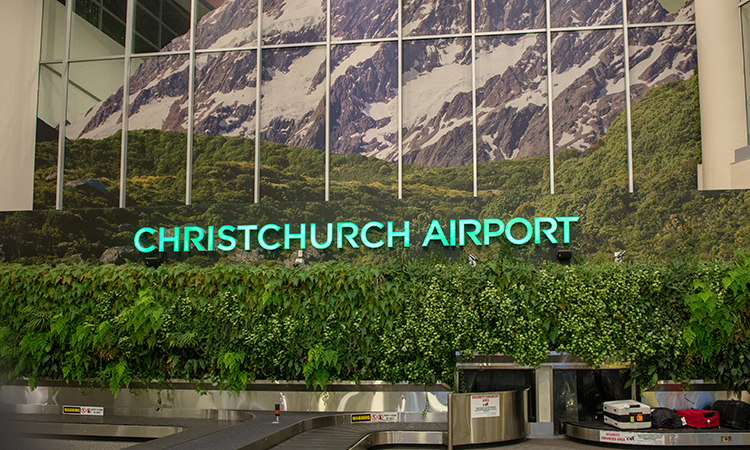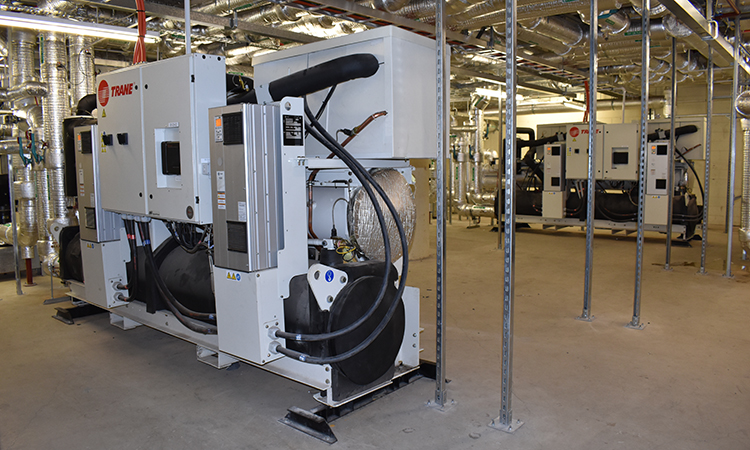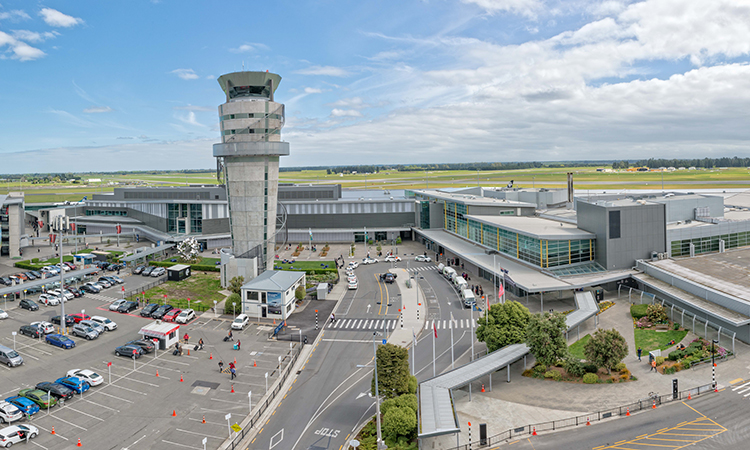Cleaner, Greener Airports: Making Aviation More Sustainable – Christchurch Airport
- Like
- Digg
- Del
- Tumblr
- VKontakte
- Buffer
- Love This
- Odnoklassniki
- Meneame
- Blogger
- Amazon
- Yahoo Mail
- Gmail
- AOL
- Newsvine
- HackerNews
- Evernote
- MySpace
- Mail.ru
- Viadeo
- Line
- Comments
- Yummly
- SMS
- Viber
- Telegram
- Subscribe
- Skype
- Facebook Messenger
- Kakao
- LiveJournal
- Yammer
- Edgar
- Fintel
- Mix
- Instapaper
- Copy Link
Posted: 5 February 2021 | Claire Waghorn | No comments yet
In the first instalment of International Airport Review’s new and exclusive sustainability series, Claire Waghorn, Sustainable Transition Leader at Christchurch Airport, discusses how the Maori concept of kaitiakitanga best describes the airport’s approach to sustainability, and how its Green Transition Plan will support ambitious emission reduction targets.


Christchurch Airport (CHC) is New Zealand’s second largest airport, the international gateway to the South Island and a major hub for air connection from New Zealand to the world’s trade and tourism markets.
Our approach to sustainability is best captured by the Maori concept of kaitiakitanga – guardianship, conservation and the connection between humans and our natural environment”
Our approach to sustainability is best captured by the Maori concept of kaitiakitanga – guardianship, conservation and the connection between humans and our natural environment. It is our responsibility to protect, preserve and foster the environment that nurtures us.
As an airport, we understand the climate science; the urgency with which we need to act to keep global temperatures within 1.5 degrees and the importance to transition our sector.
The International Air Transport Association (IATA) describes the ‘four pillars’ approach for the aviation sector to tackle emissions as: Operational improvements, aircraft technology, sustainable aviation fuel (SAF) and carbon neutral growth from 2020. Airports sit within the ‘operational improvements’ pillar, and have technology available to decarbonise now.
Carbon budgets – measure, monitor, reduce
At Christchurch Airport, we believe that you can affect what you measure.
We initiated our first independent carbon audit back in 2007. It gave us information on all activities across the airport that were generating greenhouse gas (GHG) emissions and enabled us to prioritise action on those that we could immediately affect.
Our emissions fall into three categories:
- ‘Scope 1’ – direct GHG emissions from sources owned or controlled by the airport, such as combustion in generators, vehicles, fire training or fugitive emissions from refrigerants
- ‘Scope 2’ – indirect GHG emissions from the generation of purchased electricity
- ‘Scope 3’ – all other indirect emissions which are a consequence of airport activities but occur from sources not owned or controlled by the airport e.g. aircraft movements.
Each year, we independently measure our carbon footprint and, in doing so, improve our understanding of what causes or reduces our emissions”
Each year, we independently measure our carbon footprint and, in doing so, improve our understanding of what causes or reduces our emissions. We also monitor our carbon footprint throughout the year and reflect it back to the business in our monthly carbon updates and quarterly carbon budget reports.
Our monthly carbon reporting tracks how we are doing in terms of our emission reduction targets, and also alongside the same month in the prior year. That way, we are comparing like for like, as our emission levels can be seasonally dependent. It also allows us to quickly capture any spikes or anomalies.
Our quarterly carbon reporting is similar to financial reporting and uses the same cost centres within the business. Each cost centre will have emissions attributed to it and then reflected back to it each quarter, so that members can see how they are tracking at a more granular level, and according to their own carbon reduction goals.


Credit: Christchurch Airport
Targets – align with science
From our Board of Directors right through the company, we are committed to genuine climate action, so have set absolute emissions reduction targets, not relative targets”
From our Board of Directors right through the company, we are committed to genuine climate action, so have set absolute emissions reduction targets, not relative targets. Therefore, we must reduce our total GHG emissions by a set amount over time, irrespective of passenger numbers.
Relative targets are problematic, because emissions reductions may be achieved in relation to passenger numbers, but if passenger numbers increase, overall emissions also increase. We don’t want that.
Our emissions targets relate to our Scope 1 and Scope 2 emissions, which are those within our immediate control. We also have a Stakeholder Partnership Plan to influence the reduction of our Scope 3 emissions.
To align with climate science and in order to keep global temperatures within 1.5 degrees, Christchurch Airport is committed to net zero emissions by 2030 and absolute zero emissions by 2050. This includes a milestone target of reducing our Scope 1 and 2 emissions by 84 per cent by 2035.
Emissions reduction plan – specific key projects
To achieve our reduction targets, Christchurch Airport set about developing an emissions reduction plan, known internally as our ‘Green Transition Plan’. This was a major piece of work and involved external consultants guiding us through materiality and potential courses of action, including what available technology exists.
Projects within our Green Transition Plan vary in size but share the common thread of improving our sustainability goals”
Projects within our Green Transition Plan vary in size but share the common thread of improving our sustainability goals. The project that has delivered the single largest reduction in carbon emissions possible for Christchurch Airport has been our ground source heating project. The international area of our terminal building was previously heated by four boilers – two LPG and two diesel. The project involved commissioning a ground water heating and cooling system to use the ambient temperature of the underground aquifers and heat exchange technology to replace the generators. This has resulted in huge carbon savings (982 tCO2e in 12 months), energy efficiencies and lower operating costs.


Credit: Christchurch Airport – The airport’s Ground Source Heat Pump room
Christchurch Airport has also introduced an ‘EV activation’ policy. This involves replacing our entire commercial vehicle fleet with electric vehicles or plug-in hybrid vehicles, and installing electric vehicle charging stations around campus. In some cases, electric alternatives don’t yet exist – for example, with our airport fire trucks. If a conventional vehicle is required, approval for it is required from the Chief Executive.
Other projects undertaken as part of our Green Transition Plan include replacing airport lighting with LEDs to improve energy efficiency, replacing refrigerant units with newer models with lower emission factors and developing a wide-reaching sustainable procurement plan.
The sustainable procurement plan has several aspects to it, reflective of the complexity of airport businesses. It includes consideration of the life cycles of products coming into our airport and questioning our supply chain and service providers about their emission reductions plans. It is extensive and, like most things, sustainability related, adapting to continual best practice improvements.
To date, our Green Transition Plan projects have delivered a 65 per cent reduction in our Scope 1 emissions, and a 27 per cent reduction in our Scope 2 emissions”
To date, our Green Transition Plan projects have delivered a 65 per cent reduction in our Scope 1 emissions, and a 27 per cent reduction in our Scope 2 emissions against our baseline year of 2015.
This puts Christchurch Airport ahead of the science-based target to keep global temperatures within 1.5 degrees, and well on track to achieving our 2035 milestone ahead of schedule. That’s where we want to be – aware of the science and ahead of our goals.
Stakeholder Partnership Plan
The greatest source of aviation emissions do not come from airport operations, but from airlines’ use of fossil fuel. We believe that aviation is a force for good because it broadens the mind, connects people with new cultures, experiences, places and opportunities and underpins the global economy. However, its dependency on fossil fuel is harmful.
We have, therefore, developed a Stakeholder Partnership Plan to ensure that we are constantly looking at what we can do to help support our airline partners in their journey to net zero emissions”
We have, therefore, developed a Stakeholder Partnership Plan to ensure that we are constantly looking at what we can do to help support our airline partners in their journey to net zero emissions.
The most impactful project undertaken so far has been the installation of ground power for aircraft at the gate. Instead of planes using auxiliary fuel units as passengers disembark, planes are cleaned and boarding commences, planes plug in to gate ground power. In New Zealand, 80 per cent of our electricity is generated from renewable sources, primarily hydropower – and this will increase with the government’s ambition to reach 100 per cent generation of renewable energy by 2030. Emissions reductions from replacing jet fuel with electricity are considerable. At present, we estimate an average aircraft can save 730t of CO2e per year by plugging in to ground power at the gate.
Other projects within our Stakeholder Partnership Plan include developing a Commercial Vehicle Strategy (to address land transport emissions), redesigning how we minimise waste to better support a circular rather than linear economy and re-using de-icing substances.


Credit: Christchurch Airport
Conclusion
Christchurch Airport’s Emissions Reduction Plan is the start of an iterative process, intended to harness opportunities to reduce our emissions. Leadership on climate action comes from the very top of our organisation – our Board, Chief Executive and Executive Leadership team front-foot the sustainable transition.
Our challenge is to protect the benefits of aviation and pave the way for aviation to de-couple from fossil fuel and GHG emissions. This requires immediate emissions reductions at airports, which already have viable clean tech alternatives. We have a responsibility to act now and align with climate science, for future generations and our wider ecosystem.
Claire Waghorn is the Sustainable Transition Leader at Christchurch Airport. Claire is a Barrister and Solicitor of the High Court of New Zealand with a focus on international climate law, with MSc International Relations (LSE, London), and LLB and BA (Hons) in Diplomacy and International Relations (UC, New Zealand). She is currently working towards accelerating the transition within the aviation sector towards zero carbon. Claire’s previous roles include Parliamentary Researcher for the Green Party of Aotearoa New Zealand, and Foreign Policy Officer for the Ministry of Foreign Affairs.
Related topics
Airside operations, Cleaner, Greener Airports: Making Aviation More Sustainable Series, Emissions, Ground handling, New technologies, Sustainability, Sustainable Aviation Fuel (SAF), Sustainable development, Terminal operations


















